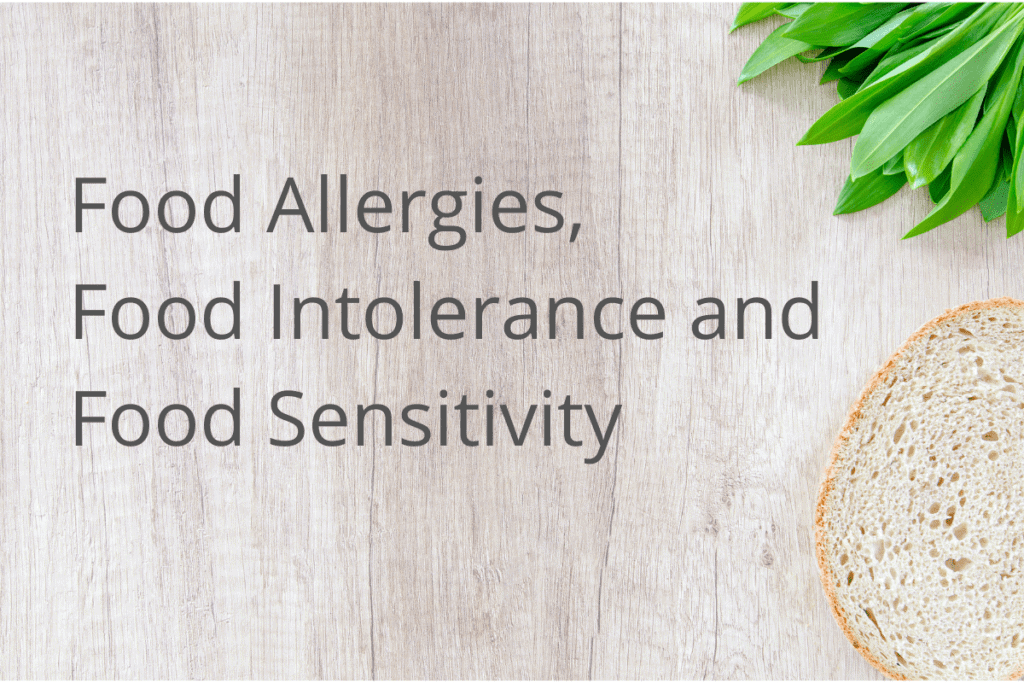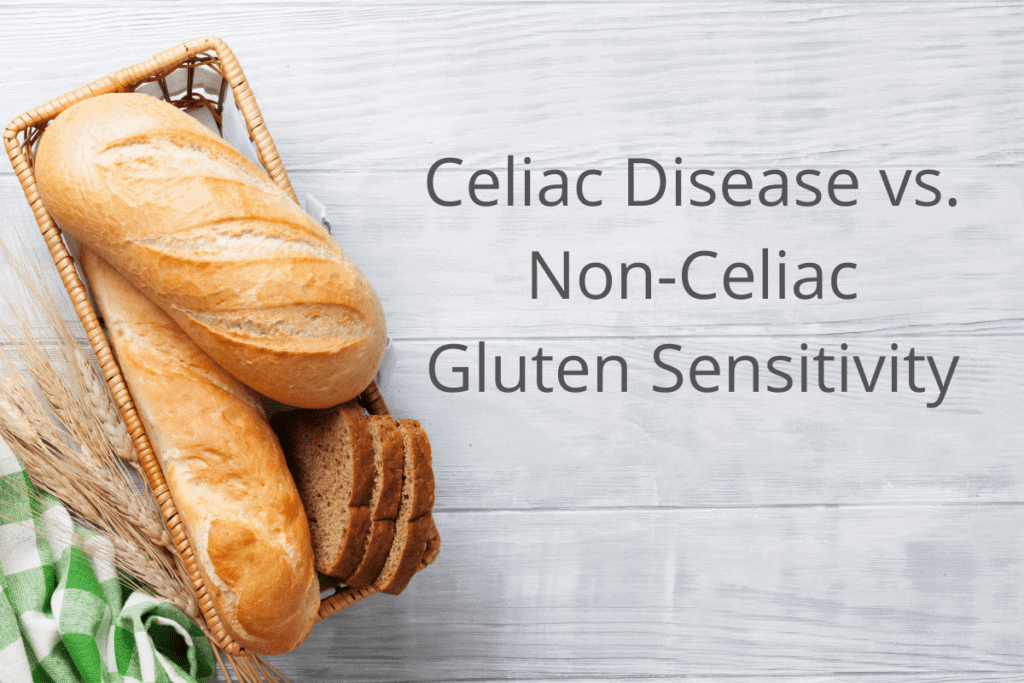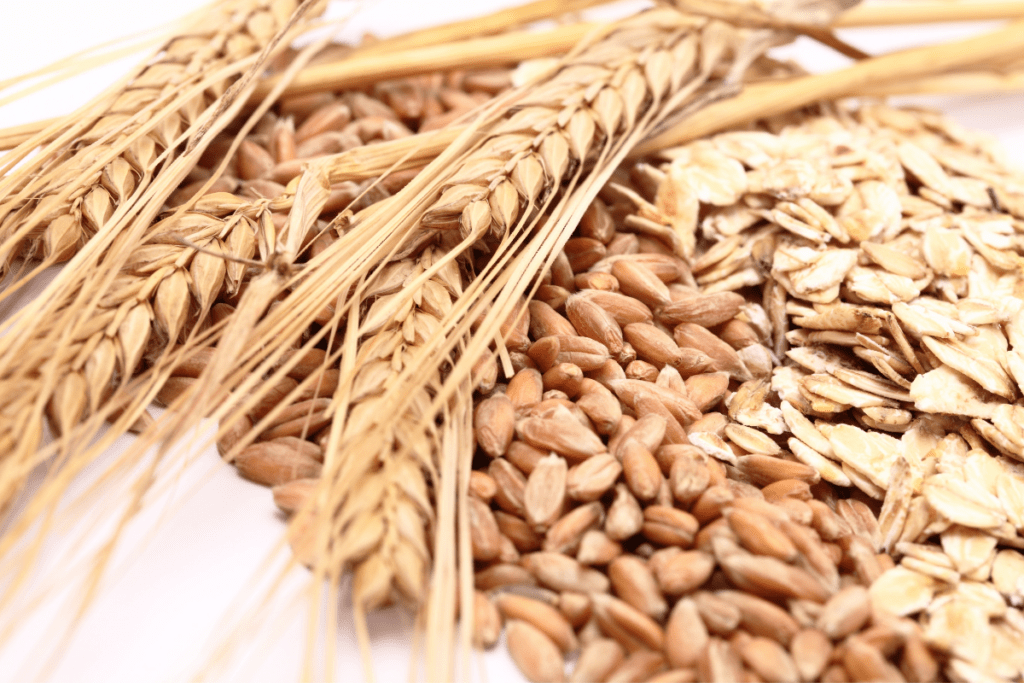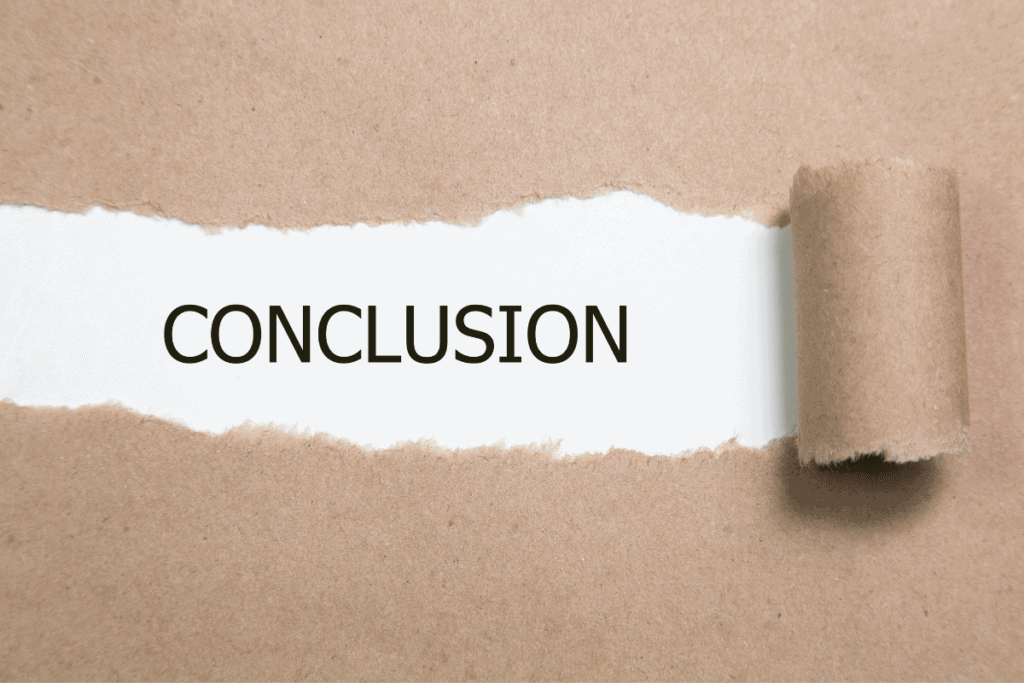
Are Wheat and Gluten Really Mast Cell and Histamine Triggers? – What to know if you have Mast Cell Activation Syndrome or Histamine Intolerance.
I had been diligently gluten free for years.
So, you can imagine my surprise when I learned my body was still making extremely high numbers of antibodies to wheat. Some extensive food antibody tests showed this.
This meant that I was still getting exposed somewhere.
I checked all my supplements, even though I’d been very careful to use gluten-free brands.
I checked my personal care products, even though I’ve been super careful about them too.
I found nothing!
Finally, after months of scratching my head, I realized my reactions were happening when I’d go out to eat with my husband for our monthly treat. I’d get steamed veggies and gluten-free rice noodles. I still had to bring my own low-histamine protein. But it was fun to get a night out.
The next time we went, I asked the waitress a few questions. And sure enough, we tracked down the problem. They were boiling the rice noodles in the same pot water as the wheat noodles. That’s how sensitive I am to gluten!
If you’ve been at this for a while, like I have, you know that figuring out these mast cell triggers takes some detective work at times.
Even if you are diligently gluten free like me, you may find gluten sneaking in on you, too.
Not everyone with Mast Cell Activation Syndrome will be sensitive to wheat or gluten, of course. But if you still struggle with brain fog, inflammation, and gut issues among other symptoms, it can be worth looking into food triggers.
Even if you do have these sensitivities like I do, you have a lot of replacement options available to you. I like to look at food choices like this: replace instead of remove.
I’ve found great alternatives and I’ll share those with you in just a bit.
I feel lucky to have so many great options now.
Let’s jump right in. We’ll start with learning more about what gluten is and how it can trigger mast cells.
Gluten and Mast Cell Activation Syndrome and Histamine Intolerance

What is gluten?
Gluten is a family of sticky proteins found in wheat, rye, and barley. These proteins give bread, pasta, and noodles their chewy texture. They also hold together very thin pastries.
Foods with gluten are often our go-to comfort foods. Warm bread, spaghetti, doughnuts, ramen…You get the picture.
But gluten (especially wheat) can be problematic, particularly for those with Mast Cell Activation Syndrome or Histamine Intolerance.
Related Article: What Is MCAS? Mast Cell Activation Syndrome Basics
Gluten is very hard to digest, even in a perfectly healthy gut.
Certain gluten proteins in wheat can set off immune cells, especially mast cells. These gluten proteins are known to trigger a mast cell receptor called the Toll-like receptor.
If you have Mast Cell Activation Syndrome, you don’t want to trigger the mast cells. You want to strive to calm the mast cells.
We also know that activated mast cells release mediators like histamine. Histamine causes inflammation. Inflammation can be experienced as joint or muscle pain.
It can also be experienced as digestive issues. Inflamed bowels can result in abdominal pain, cramps, or diarrhea, to name just a few possible symptoms.
Gluten in wheat can also cause a leaky gut. When you have a leaky gut, gluten particles, food, and gut bacteria can enter your bloodstream. When gluten enters the bloodstream, your brain, pancreas, and joints can be negatively affected.
When gluten gets past the gut lining and into the blood stream, the immune system can get confused. It can start attacking everything in the body that looks like gluten proteins. This includes the proteins in your heart, joints, and nervous system that are similar to gluten proteins.
Autoimmunity is a condition in which your immune system mistakenly attacks your own tissues.
Normally, the immune system will know the difference between your own cells and foreign cells, like from bacteria and viruses. When it senses those foreign cells, it attacks them.
But with autoimmunity, the immune system will make mistakes in identifying what to attack. So it can mistakenly attack your own joints, skin, or organs.
This is how gluten can be a major contributor to autoimmunity, which is very common in people with Mast Cell Activation Syndrome.
To make matters worse, gluten-containing grains, like wheat, can be heavily sprayed with glyphosate and other pesticides. These are very toxic. They can activate mast cells on top of creating major issues with the gut.
As you can see, gluten can cause problems throughout the body, especially in very sensitive people.
Everyone is different. For one person, gluten sensitivity may lead to brain fog, but for the next person it may lead to joint pain.
Some people know they have a problem with gluten. Others have been eating gluten their entire lives not knowing their body is actually responding negatively to gluten.
For example, I have a friend who had mood shifts when we’d go out to eat. He’d get crabby after we finished dinner. He also had digestive issues after meals. I’d sometimes hear him say his stomach hurt due to “something I ate.” And he’d disappear to the bathroom while we were waiting for the check. But he never knew what that “something” was.
When he gave up gluten as a health experiment, his wife told me she noticed a huge change in his personality. He was no longer irritable about every little thing. And his stomach felt a lot better, too. He also had more energy and felt like doing more. He loves to bike, and since he went gluten free, he has added significant mileage to his rides.
He’s in his seventies now and has been gluten-free for about a year. But his whole life up until then, he had no idea gluten was bringing him down!
So, if you are still eating gluten and have Mast Cell Activation, it might be a good idea to try going gluten free to see what happens.
Before you change your diet on your own, please make sure you’re working with a healthcare practitioner who can help you with this. Never limit foods unnecessarily, and always have a licensed medical provider who is supervising your case.
Now you now more about gluten as a mast cell trigger. Next, I want to help clarify what the difference is between an allergy, an intolerance, and a sensitivity.
What is the Difference Between a Food Allergy, Food Intolerance, and Food Sensitivity – What to know for those with Mast Cell Activation Syndrome or Histamine Intolerance.

Many people talk about these like they are the same thing. But there are some subtle differences that are helpful to know about.
We’ll start with intolerance. You are probably already familiar with one that we talk about a lot…Histamine Intolerance.
An intolerance is what happens when the body isn’t able to get rid of something fast enough. Histamine, salicylate, and oxalate issues are intolerances.
With histamine intolerance, we often talk about this using a sink metaphor. Your “sink” might be small, or it might be full.
The sink is how much histamine (or salicylates or oxalates) your body can keep up with at any given time.
With this metaphor, water pouring into the sink is the amount of histamine, salicylates, or oxalates you are consuming or producing in your body.
Then at the bottom of the sink there’s a drain. The drain is your body’s way of getting rid of histamines, salicylates, and oxalates. You do this mostly through special enzymes in your body and through excretion in urine, stool, and sweat.
So, when you add more than the sink can drain, the sink overflows.
Basically, intolerances happen when your body can’t keep up with the overflow. For example, when histamine levels build up and are more than your body can handle, that’s when you can get Histamine Intolerance.
Symptoms for each type of intolerance vary. Even from person to person, they can be different. With Histamine Intolerance common symptoms can include itching, headaches, digestive issues, anxiety, fatigue, and sleep problems.
Common symptoms of Oxalate Intolerance can include urinary tract pain and urgency, joint pain, muscle pain, painful bowel movements, rashes, and mood swings.
Salicylate Intolerance symptoms, on the other hand, can show up as ear ringing, trouble breathing, headaches, congestion, stomach pain, and GI issues.
FODMAPs are another type of intolerance. This is where your body can’t break down certain fibers found in specific fruits, some vegetables, some grains, lactose, and sugar alcohols. This can show up as bloating, gas, intestinal pain, constipation, and/or diarrhea after eating these foods.
Intolerances can trigger an immune reaction for various reasons. But they aren’t caused by an immune reaction like food allergies or sensitivities.
Let’s look at allergies next.
Food allergies aren’t nearly as common as sensitivities. Food allergies occur in only about 2-5% of the population. With an allergy, your immune system treats the food you are allergic to as a harmful invader. A food allergy triggers what’s called an IgE immune reaction. You might know this better as an anaphylactic reaction.
These can be fairly serious.
An anaphylactic reaction is usually immediate and severe. Common reactions are hives, trouble breathing, throat closing, fainting, fast heartbeat, anxiety, and vomiting or diarrhea. An allergy can be a concern for years, or it can be lifelong.
With a food allergy, even the smallest amount of a food can trigger a response in some people. For example, someone with a severe, true IgE peanut allergy may not be able to travel on an airplane where someone several rows away might be eating peanuts.
There are also people with milder IgE food reactions that they may not know about, but can be triggering mast cells.
The best testing for IgE food allergies in people with mast cell issues is blood testing (not skin prick testing).
A Gluten allergy is a food allergy that can cause severe and immediate symptoms such as hives, difficulty breathing, and diarrhea. This would be an IgE form of immune reaction to gluten.
Food sensitivities, though, are much more common. Let’s look at this next.
Food sensitivities are a different kind of immune response. With an allergy, an IgE response is triggered. With food sensitivities, other immune responses, like IgG, are triggered.
These responses often happen when the gut lining is leaky and food particles leak into the blood stream. This can cause delayed reactions that can be hard to pinpoint. They can cause a ton of problems, but typically a sensitivity isn’t life-threatening in the way allergies can be.
Food sensitivities often develop with leaky gut. When the gut lining is leaky, small food particles can get into the blood stream where they don’t belong. Then the immune system comes along and creates what are called IgG antibodies to the foods seen as a threat.
IgG food sensitivities can be tested with blood testing. Some tests are better than others, though. Generally, the bests tests are available through your health care provider.
These results also need to be reviewed by your health care provider who can help you put together a plan. Many people with Mast Cell Activation Syndrome have dozens of IgG food sensitivities.
It can be detrimental to cut all of them out. Sometimes rotation is a better idea. And if there are several IgG positive foods, then it may make sense to work on the underlying causes of the leaky gut instead of whittling your foods down to very few.
So, get help before you reduce every IgG positive food.
Gluten sensitivity (non-celiac gluten sensitivity) is the most common form of problem with gluten. It can create some of the same symptoms as an allergy or Celiac Disease such as diarrhea or abdominal pain. But, it typically isn’t life-threatening like an allergy can be. And it doesn’t cause visible damage to the gut like Celiac. But it can still cause a lot of problems…especially if you have Mast Cell Activation Syndrome or Histamine Intolerance.
Sensitivities are mostly what we’re talking about in this post.
However, when we talk about Gluten, we should mention Celiac Disease. Let’s briefly look at the differences between Celiac Disease and Non-Celiac Gluten Sensitivity.
Celiac Disease vs Non-Celiac Gluten Sensitivity - What to know for people with Mast Cell Activation and Histamine Intolerance

Celiac disease is an autoimmune condition that damages the small intestines. In people with the genetic tendency for it, gluten consumption can cause the immune system to destroy their gut lining.
This could result in severe symptoms with even tiny amounts of gluten. Symptoms might include severe abdominal pain, projectile vomiting, or very bad diarrhea.
There are some key differences between Celiac and gluten sensitivity.
With Celiac, there are specific genes that can make someone genetically predisposed to it. It doesn’t just happen from eating gluten. However, not all people with those genes that predispose them to Celiac will develop Celiac.
And only half of gluten-sensitive people have the genes or antibodies against gluten.
If someone does have Celiac Disease, though, the body treats gluten as a foreign invader. It forms antibodies to try to remove the gluten and triggers the immune system to attack the small intestine. Someone with Celiac Disease will have damage in their small intestines if they are eating gluten, which can be seen on an endoscopy.
Someone with Celiac will tend to have more severe symptoms than someone with gluten sensitivity. Here are some common symptoms associated with Celiac Disease:
- Anemia
- Skin rash
- Fatigue and headaches
- Neurological issues
- Other autoimmune diseases
- Pain
- Digestive problems such as bloating, gas, constipation or diarrhea, abdominal pain, and nausea and vomiting
After someone with Celiac stops eating gluten, it can take 6 – 18 months for their gut to completely heal. It may take even longer for the rest of the body to fully recover.
On the other hand, people with gluten sensitivity may feel fine a few days after they stop eating gluten.
Both people with Celiac disease or gluten sensitivity can react to even microscopic amounts of gluten. So, if you are very sensitive to gluten or have Celiac disease, you may want to double check your foods as well as personal products.
Now that you know some ways in which gluten can be problematic, let’s look at which foods contain gluten. Some may surprise you! Then we’ll look at products (non-foods) where gluten may be hiding.
Foods With Gluten – Info for those with Mast Cell Activation Syndrome or Histamine Intolerance

You may already know that wheat bread, pasta, and pizza dough contain gluten. But it can also be hiding in places you might not expect.
For example, did you know gluten might be in the meat you eat?
Many conventionally raised cows or chickens are fed wheat, corn, and soy. These foods aren’t naturally what these animals would eat. They are cheap and can fatten the animals quickly.
Some people with gluten sensitivities have stated that they’ve had reactions when exposed to meats that were raised conventionally. They didn’t have these same reactions when eating grass-fed animals that weren’t fed wheat, corn, or soy.
Related Article: Is Corn High in Histamine and Lectins?
So, if you’re quite sensitive to wheat (or even corn and soy) and having reactions when you eat meat, you might want to consider this. It can be a little challenging to find this kind of meat, but there are options.
To read more on low histamine meat options. Check out this blog:
The Best Low Histamine Meat and Seafood Options – info for those with Mast Cell Activation Syndrome and Histamine Intolerance
Here are some other foods to be aware of with gluten sensitivity.
Gluten Grains
- Wheat (including wheat bran, wheat bran extract, wheat germ, wheat germ extract, wheat protein, and wheat starch)
- Rye
- Barley (or barley extract)
- Einkorn
- Semolina
- Spelt
- Couscous
- Farina
- Kamut
- Wheat berries
- Bulgur
- Malt
- Durum
Some Common Foods Often Containing Gluten
Some of these foods now come in gluten-free options. They will usually say on the label that they are certified gluten-free. However, gluten can sneak into products you wouldn’t expect. Be sure to check labels on these common foods.
- Breadcrumbs including some panko
- Pies and pastries
- Malt extract, malt syrup, and malted milk (comes from barley)
- Most beer
- Bread, including naan and pita
- Wheat tortillas
- Croutons
- Pasta/Noodles
- Condiments like sauces, salad dressings, and gravies
- Vegetarian meat substitutes
- Vienna sausages (Some are packed in broth. Some broths contain wheat or yeast.)
- Processed meats including bacon (Some have flavorings or additives with gluten.)
- Stuffing
- Thickened soups
- Soy sauce and other fermented soy products
- Miso paste (many are gluten-free but some contain barley, wheat, or rye.)
- Some breakfast cereals, granolas, and granola bars
- Crackers including graham crackers
- Modified food starch
- Imitation crab or crabstick
- Wontons or dumplings
- Meatloaf or meatballs (breading and bread crumbs)
- Egg dishes in restaurants (may contain flour as a sauce thickener)
- Brewer’s yeast
- Energy or granola bars
- Spice powders or mixes (additives and flavorings may contain gluten)
- Fillers in supplements
Specifically, if you are wheat sensitive, look for these other names ingredients can go by:
- hordeum vulgare extract (Latin for barley)
- secale (Latin for rye)
- hydrolyzed wheat protein (HWP)
- hydrolyzed wheat gluten
- triticum (Latin for wheat)
- wheat germ glyceride
If you’re incredibly sensitive or have Celiac, you may have to watch for these as well:
- oats (unless marked gluten free; oats often get mixed with wheat at harvest)
- oat amino acid
- avena sativa extract (latin for oat)
Gluten can also show up in non-edible items like cosmetics, too. Some cosmetics or personal care items are created using extracts and flours derived from wheat, barley, and rye. That means there is a chance your lotions or make-up might contain gluten.
Check these non-food items to see if they are gluten-free or not.
Personal Care Items To Check for Gluten
- Cosmetics, skincare, and body care products
- Dental products and toothpastes
- Play-dough or play slime
Some great gluten free options for these:
Primal Life Organics Toothpowder offers a great product. Not only is it gluten free, but it’s great for those with MCAS or Histamine Intolerance. It doesn’t have synthetic additives, preservatives, artificial colors or flavors, either. Stick with peppermint or spearmint if you have histamine intolerance.
They also have some gluten free makeup and skincare options.
100%Pure also offers many personal care and beauty products that are gluten free.
For more recommendations for personal care items, you can check out our blog post on safe skincare here: Safe Skincare for Those with Mast Cell Activation Syndrome or Histamine Intolerance
If you are quite sensitive to wheat in general, though, you may also need to avoid wheatgrass and barley grass in food and products as well.
While these don’t have gluten, someone people with significant wheat sensitivities may have trouble with those too – so be sure to check ingredients.
Additionally, if you are very sensitive, you may want to consider these ways in which gluten can sneak into your otherwise gluten-free choices.
Sources of Potential Gluten Contamination – What to know if you have Mast Cell Activation Syndrome or Histamine Intolerance

Earlier, I told you the story of how I was reacting to the “gluten-free” rice noodles at the restaurant. Cross-contamination can happen in a number of ways. In my case, my rice noodles were being cooked in the same pot of water as the wheat noodles.
Whether in your home or at a restaurant, be mindful of shared appliances and kitchen tools. This can include toasters, grills, and strainers where wheat foods are being cooked.
You also want to watch out for foods that may be gluten-free but are cooked with gluten- containing foods. For example, at a fast-food restaurant you might order fries. Now typically, I wouldn’t suggest fast-food fries if you have Histamine Intolerance. They can be heavily processed with preservatives.
But I use this example to show something related to gluten sensitivity. Fries might be gluten-free. But is the oil they are being cooked in? Fried mushrooms or mozzarella sticks are also being cooked in that same oil. And those things can have a lot of breading. Breading is, of course, a source of gluten.
So if you are really sensitive to gluten, be mindful when it comes to foods being cooked on the same surface or in the same oil as other foods.
You also want to be mindful of bulk foods. If you go to many health food stores, you’ll see bins of flours, grains, nuts, and all kinds of treats. And there often isn’t a designated scoop for each different item. That means someone might scoop a product containing wheat right before you scoop your “gluten-free” items.
Packaged foods are another thing to consider if you are sensitive to gluten. Unless a factory is certified gluten-free, the item you think is gluten-free may be contaminated. Factories can produce multiple kinds of foods in the same space and using the same equipment.
Just be sure to read the labels if you aren’t sure. Most packages will have a number you can call for questions or a website you can go to if you need more information.
How to Replace Gluten Products – What to know if you have Mast Cell Activation Syndrome or Histamine Intolerance

Good news: Nowadays you can find numerous certified gluten-free options and ingredient alternatives on mainstream supermarket shelves. And you can still cook from scratch by using substitutes like these that I’ve found are generally well-tolerated:
- Otto’s Cassava flour
- Tapioca starch as a thickener
- Tiger Nut flour
- Rice flour (does have some lectins)
- Sorghum flour
You can find tons of low histamine, gluten free recipes on our website here:
Low Histamine, Gluten Free Recipes
Some of my favorites are:
- Cassava Herb Crackers – Low Lectin, Medium Oxalate, & Low FODMAP
- Cassava Tortillas – Low Lectin & Medium Oxalate
- White Chocolate Cookie Dough – Low Lectin and Low Oxalate
- Blueberry Cassava Flour Muffins – Low Lectin and Medium Oxalate with Low Salicylate Options
We’ve got you covered for tortillas for taco night, herbed crackers for your crunchy snack needs, and even desserts like apple crumble.
When you think about replacing foods, you sometimes have to get creative. And you have to be willing to try new things.
I’ve done a lot of this. And I’ve found some of my new favorite foods this way. These are foods I’d eat even if I didn’t have to worry about my food choices at all.
You can start with some of our recipes if you don’t know where to start. But once you get some confidence, here’s what you can do.
I start by looking at my favorite recipes. I don’t mean my favorite gluten-free recipes. I mean my favorite recipes. Period.
First, I look for the easiest substitutions. Can I use a different kind of flour in place of wheat flour? Or can I grind nuts to make my own “flour”? In my Low Histamine Cookie Dough recipe, I don’t use any store-bought flours at all. I just use nuts and grind them in my blender. Even my friends without food sensitivities ask for more with this recipe.
I can even have bread for sandwiches or flatbread for dipping by using Tiger Nut Flour or Cassava Flour. I can even have pizza using those options. (You’ll find recipes for all these on the blog, too.)
There are store-bought gluten-free options for many foods now. Pasta, for example, can usually be found in your grocery. But you can also consider doing veggie noodles. One of my clients came up with a delicious Low Histamine Stroganoff Recipe. I then modified it a little to use carrot and rutabaga “noodles.”
If you find you are Oxalate Intolerant, you might want to skip the carrots in the stroganoff recipe or you may be able to tolerate up to a 1/2 cup of boiled carrots if you discard the water.
So, start with what you know and go from there. Ask yourself, what is similar? How can I get creative?
PRO TIP: You might need to experiment a little. And you might not be successful the first time. You might find you need a little more or a little less of an alternative flour, for example.
When I experiment with a recipe, I usually half it in the testing stages. That way, I haven’t wasted much if it doesn’t come out just right. Then I know what to do for next time to improve.
And a positive outlook is helpful. I’ve learned to approach recipe swaps like a game I’m going to win. I feel satisfied when something works when I have this mindset. It’s a victory. It helps more to think about what you can have rather than what you can’t have.
But I know it can be tough sometimes. If you need a little mood boost, check out the Hugs With Words Project for some words of encouragement.
Conclusion – What to do about Wheat and Gluten when you have Mast Cell Activation or Histamine Intolerance

Before you change your diet on your own, please make sure you’re working with a healthcare practitioner who can help you with this. Never limit foods unnecessarily, and always have a licensed medical provider who is supervising your case.
Many people with Mold Toxicity and Mast Cell Activation Syndrome already struggle with these issues:
- Insulin resistance
- Autoimmunity
- Constipation
- Brain fog and other cognitive issues
- Neurological and mental health problems
- Pain disorders
Foods like gluten can make these reactions worse.
Food reactions are different for everyone. Even within a food group, you may be able to tolerate one thing but not another.
One way to find out if a food is causing you problems is to do an elimination trial. If you are sensitive to wheat and gluten, you can try the substitution options.
Not everyone can or should limit foods, though. If you can currently tolerate many foods, you may want to explore if eliminating wheat and gluten can reduce inflammation.
However, if you can only eat 10 foods or less, it may not be helpful to remove more foods from your diet. And definitely don’t reduce foods even more without help from your healthcare practitioner.
If you do want to experiment to see if your reactions are from gluten and wheat, here is one way to do it:
Start with a food and symptoms journal. It can be a basic lined notebook. You can divide each page into thirds: one for the date, one for the foods eaten, and one for symptoms. You might want to track this for a few days before you give anything up.
Then you could start by eliminating wheat and gluten all at once. Keep track of symptoms in the symptoms journal.
Because of how wheat affects the immune system, for a good elimination trial you need to be diligent for 6 weeks. If you accidentally get gluten, then you’ll want to start your 6-week trial over again.
If you feel better, you’ll know you are on the right track. But if you don’t notice any difference, you might have more detective work to do.
It might be that you have other big issues going on…like mold toxicity. And you may need to start addressing that first.
Or it may be that you have some nervous system dysregulation going on. These are two of the very most common issues that I see preventing people from progressing with their food sensitivities.
And either way, if you aren’t sure what is going on for you, you may need to consult with a healthcare provider to be sure you’re properly supported.
Whatever your needs may be, don’t give up. Your answers are out there! It may take some time. It may take some experimenting. But there is hope.
I’m wishing you all the best!
*Some links in this website are affiliate links, which means Mast Cell 360 may make a very small commission if you purchase through the link. It never costs you any more to purchase through the links, and we try to find the best deals we can. We only recommend products that we love and use personally or use in the Mast Cell 360 practice. Any commissions help support the newsletter, website, and ongoing research so Mast Cell 360 can continue to offer you free tips, recipes, and info. Thank you for your support!
References on Wheat and Gluten – info for people with Mast Cell Activation Syndrome or Histamine Intolerance
Barhum, L. (2018, July 26). Calcium-rich foods that vegans can eat. Medical News Today. https://www.medicalnewstoday.com/articles/322585
Bartley, J., & McGlashan, S. R. (2010). Does milk increase mucus production? Medical Hypotheses, 74(4), 732–734. https://doi.org/10.1016/j.mehy.2009.10.044
Bengmark, S. (2013). Gut microbiota, immune development and function. Pharmacological Research: The Official Journal of the Italian Pharmacological Society, 69(1), 87–113.
Bolland, M. J., Leung, W., Tai, V., Bastin, S., Gamble, G. D., Grey, A., & Reid, I. R. (2015). Calcium intake and risk of fracture: systematic review. BMJ , 351, h4580. https://doi.org/10.1136/bmj.h4580 https://doi.org
/10.1016/j.phrs.2012.09.002
Christy, A. L., & Brown, M. A. (2007). The multitasking mast cell: positive and negative roles in the progression of autoimmunity. Journal of Immunology , 179(5), 2673 2679. https://doi.org/10.4049/jimmunol.179.5.2673
Familydoctor.Org Editorial Staff. (2021, January 21). Inflammatory Bowel Disease (IBD) – Symptoms. Familydoctor.Org. https://familydoctor.org/condition/inflammatory-bowel-disease-ibd/
Giancola, F., Volta, U., Repossi, R., Latorre, R., Beeckmans, D., Carbone, F., Van den Houte, K., Bianco, F., Bonora, E., Gori, A., Costanzini, A., Boschetti, E., Caio, G., Vanuytsel, T., Stanghellini, V., Tack, J., & De Giorgio, R. (2020). Mast cell-nerve interactions correlate with bloating and abdominal pain severity in patients with non-celiac gluten / wheat sensitivity. Neurogastroenterology and Motility: The Official Journal of the European Gastrointestinal Motility Society, 32(6), e13814.
Ho, S., Woodford, K., Kukuljan, S., & Pal, S. (2014). Comparative effects of A1 versus A2 beta-casein on gastrointestinal measures: a blinded randomized cross-over pilot study. European Journal of Clinical Nutrition, 68(9), 994–1000. https://doi.org/10.1038/ejcn.2014.127
Jianqin, S., Leiming, X., Lu, X., Yelland, G. W., Ni, J., & Clarke, A. J. (2016). Effects of milk containing only A2 beta casein versus milk containing both A1 and A2 beta casein proteins on gastrointestinal physiology, symptoms of discomfort, and cognitive behavior of people with self-reported intolerance to traditional cows’ milk. Nutrition Journal, 15, 35. https://doi.org/10.1186/s12937-016-0147-z
Ke, K., Arra, M., & Abu-Amer, Y. (2019). Mechanisms Underlying Bone Loss Associated with Gut Inflammation. International Journal of Molecular Sciences, 20(24). https://doi.org/10.3390/ijms20246323
Khammissa, R., Fourie, J., Motswaledi, M. H., Ballyram, R., Lemmer, J., & Feller, L. (2018). The Biological Activities of Vitamin D and Its Receptor in Relation to Calcium and Bone Homeostasis, Cancer, Immune and Cardiovascular Systems, Skin Biology, and Oral Health. BioMed research international, 2018, 9276380. https://doi.org/10.1155/2018/9276380
Köttgen, E., Kluge, F., Volk, B., & Gerok, W. (1983). The lectin properties of gluten as the basis of the pathomechanism of gluten-sensitive enteropathy. Klinische Wochenschrift, 61(2), 111–112.
Kumar, S., Khodoun, M., Kettleson, E. M., McKnight, C., Reponen, T., Grinshpun, S. A., & Adhikari, A. (2014). Glyphosate-rich air samples induce IL-33, TSLP and generate IL-13 dependent airway inflammation. Toxicology, 325, 42–51.
Malmir, H., Larijani, B., & Esmaillzadeh, A. (2020). Consumption of milk and dairy products and risk of osteoporosis and hip fracture: a systematic review and Meta-analysis. Critical Reviews in Food Science and Nutrition, 60(10), 1722–1737. https://doi.org/10.1080/10408398.2019.1590800
Mayo Clinic Staff. (2019, November 2). Food allergy – Symptoms and causes. Mayo Clinic. Retrieved October 29, 2021, from https://www.mayoclinic.org/diseases-conditions/food-allergy/symptoms-causes/syc-20355095
Miller, M. J., Zhang, X. J., Gu, X., Tenore, E., & Clark, D. A. (1991). Exaggerated intestinal histamine release by casein and casein hydrolysate but not whey hydrolysate. Scandinavian Journal of Gastroenterology, 26(4), 379–384. https://doi.org/10.3109/00365529108996498
Nanayakkara, M., Lania, G., Maglio, M., Auricchio, R., De Musis, C., Discepolo, V., Miele, E., Jabri, B., Troncone, R., Auricchio, S., & Barone, M. V. (2018). P31-43, an undigested gliadin peptide, mimics and enhances the innate immune response to viruses and interferes with endocytic trafficking: a role in celiac disease. Scientific Reports, 8(1), 10821. https://doi.org/10.1038/s41598-018-28830-y
Pruimboom, L., & de Punder, K. (2015). The opioid effects of gluten exorphins: asymptomatic celiac disease. Journal of Health, Population, and Nutrition, 33, 24. https://doi.org/10.1186/s41043-015-0032-y
Roszkowska, A., Pawlicka, M., Mroczek, A., Bałabuszek, K., & Nieradko-Iwanicka, B. (2019). Non-Celiac Gluten Sensitivity: A Review. Medicina , 55(6). https://doi.org/10.3390/medicina55060222
Stępnik, M., & Kurek, M. (2002). The influence of bovine casein-derived exorphins on mast cells in rodents. Revue Française d’Allergologie et d’Immunologie Clinique, 42(5), 447–453. https://doi.org/10.1016/S0335-7457(02)00176-4
Thakur, K., & Anand, A. (2015). Milk metabolites and neurodegeneration: Is there crosstalk? Annals of Neurosciences, 22(4), 239–243. https://doi.org/10.5214/ans.0972.7531.220410
Wingren, U., Hallert, C., Norrby, K., & Enerbäck, L. (1986). Histamine and mucosal mast cells in gluten enteropathy. Agents and Actions, 18(1-2), 266–268.
Zavázal, V., & Krauz, V. (1985). Lectin-binding ability of immunoglobulin E and its participation in triggering of mast cells. Folia Microbiologica, 30(3), 237–246. https://doi.org/10.1007/BF02923516





Was the food antibody test you took an IGG test?
Are food sensitivities permanent like allergies?
Hi Anton,
Beth did an IgG antibody test from Vibrant.
Food sensitivities are not necessarily permanent. It really depends on the person and what they are doing to address some of the causes of it. For example, if the food sensitivity is being caused by leaky gut, getting that under control may mean that a person can eat some foods they were sensitive to sometimes once the gut is repaired. However, for other people, this won’t be the case.
Best regards, Suz, MC360